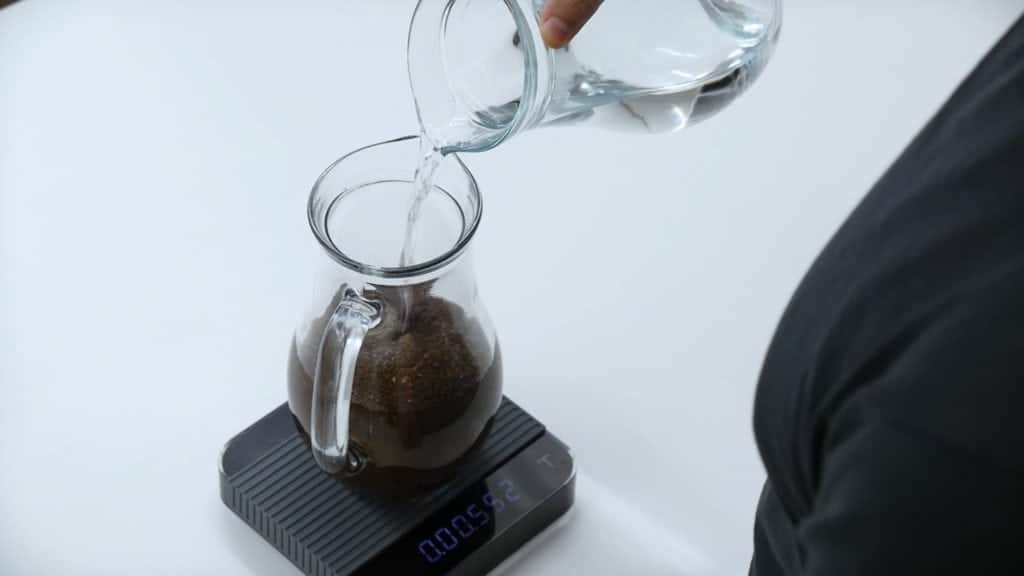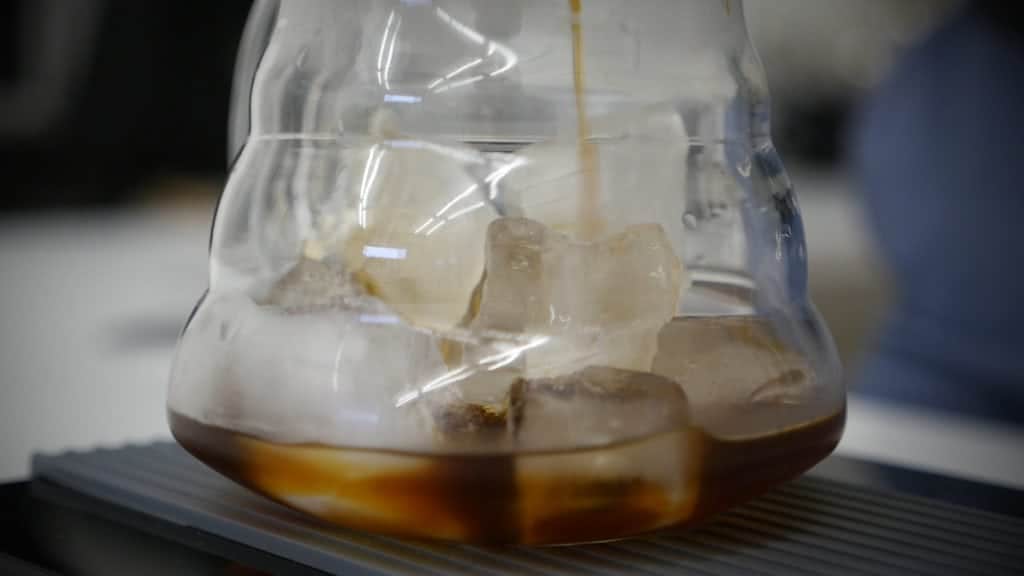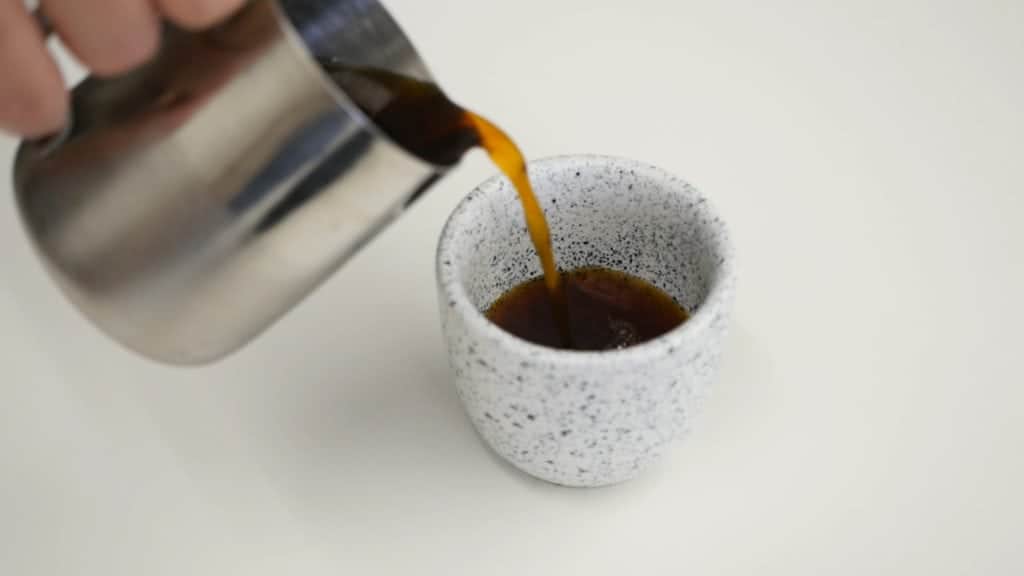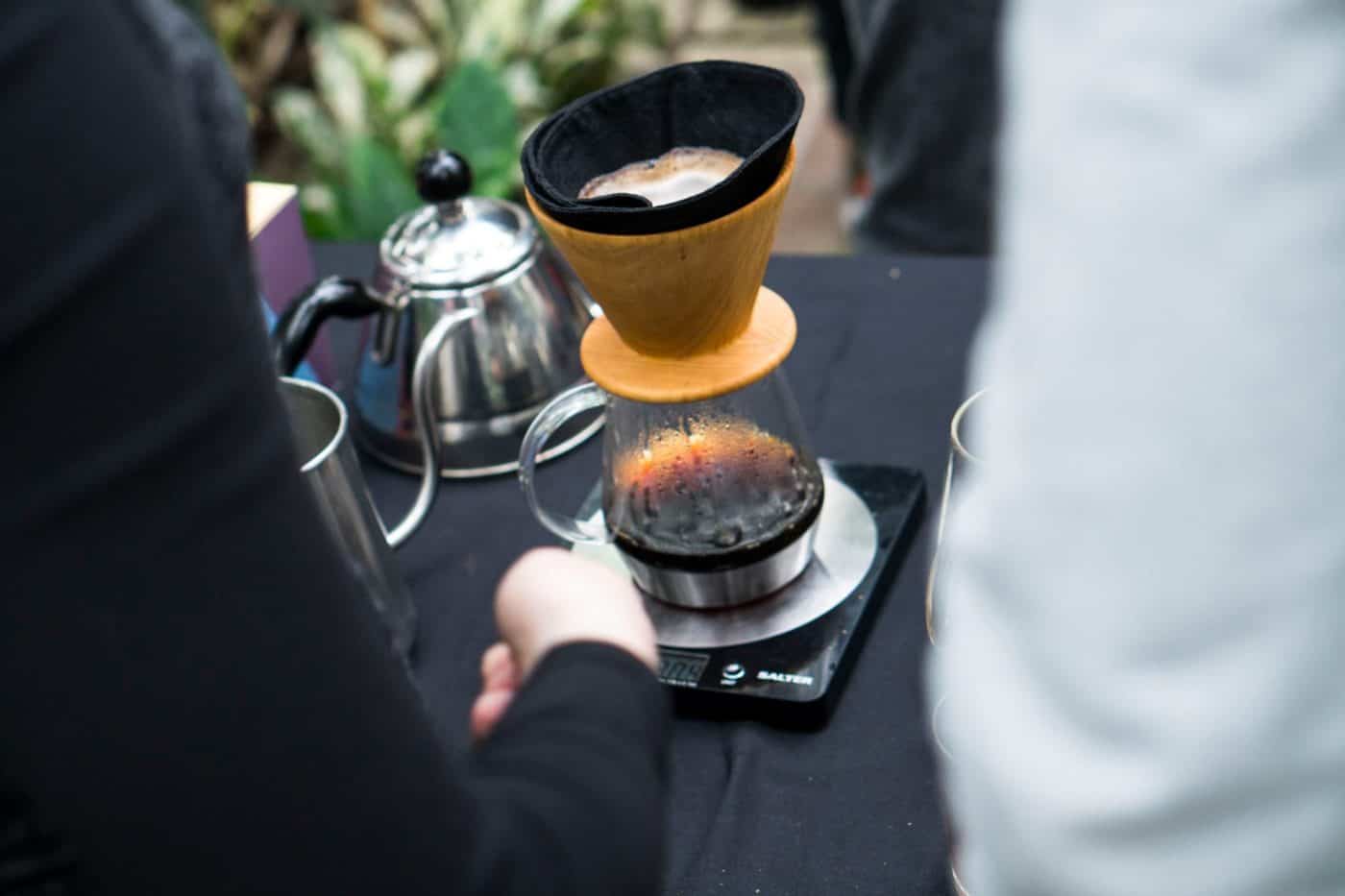Summer is not over yet, and we bring you three simple recipes for cold coffees that may be useful on those hot days, whether you are at the office, or at home.
We picked three different methods that will result in a chilled cup of coffee. Each of them takes a different amount of time to prepare, so let’s start with the longest one.
Cold Brew
Cold brew is a brew method that uses a large amount of cold water at once, and the brewing takes up to several hours. In this process, we opted for the brew ratio of 1:10, or in other words, 90 g of coffee and 900 ml of water. You can adjust the strength of your beverage by adding more coffee, or using less water, based on your preference.
Our brew time was 12 hours, which is perfect if you want to have the coffee ready in the morning. All you need to do is to grind your coffee coarsely into a large, one-litre jar, pour the cold or room-temperature water over it, and stir it well to wet all the grounds. Then you put it in the fridge and let it steep. After 12 hours, you filter the brew over a filter paper, for example using the Chemex brewer, or the Hario V60. This will separate the tiny particles of ground coffee from the brew, while the majority of the grounds will be sitting at the bottom of the jar already.

And what are the pros and cons? Obviously, the volume is its advantage. You can prepare a big jar of coffee that will be at ready for you and your family, perhaps for a weekend summer brunch. The disadvantage is that it only takes quite a long time and so you have to plan ahead. We encourage you to try cold brew as an ingredient, for example mixing it with cold milk, served on ice, or by adding some tonic to it, creating a coffee tonic.
This method of brewing is suitable especially for those of you who enjoy coffees with less acidity, as well as less bitterness. If you, like us, enjoy the fruity notes in coffee, try to brew cold brew with beans that have naturally brighter notes, such as Kenyan coffees.
Japanese Iced Coffee / Coffee on Ice
Japanese Iced Coffee is a method that adjusts the brew recipe for a regular pour over method, such as V60, in order to prepare a cold serving of a hand-brewed coffee at once.
It requires the same amount of coffee you would use with your V60, in our case, that was 15 grams. The amount of your brew water though will be adjusted; half will be in the form of ice cubes, and half will be your regular hot water (94℃). We used a total of 250 ml.
The brew proceeds as with your usual hot brew. First, you rinse the paper filter with hot water to remove the papery taste, then you grind your coffee on a medium-fine grind setting, aiming for a brew time of 2-2:30 min, and proceed to brew as usual.

The ice cubes melt during the brewing process, and so you end up with a finished cold coffee an incomparably faster time than in the case of a cold brew. The time is certainly the key advantage of this method, but you may need to spend some extra time on your ice cubes. Ideally, you want to use ice cubes that are made with filtered water, in order not to influence the taste of the coffee. If you also play around with the grind setting and the brew ratio, you may achieve the perfect Japanese Iced Coffee.
Chilled Brew
The easiest of the three methods is definitely Chilled Brew. As the name already suggests, you prepare it by cooling down a finished brew, such as V60, a Clever Dripper, or a Chemex. We used the V60, since it is our most used method at the office, and brewed it with 15 g of coffee and 250 g of water. The water was of 94℃. Once finished, we recommend pouring the coffee into a cold-resistant container, such as a metal one, since glass may become fragile if cooled down quickly. You can also transfer it into a closed container, in order for the coffee to stay safe from the odours in the fridge.
You will find that this method is of the most similar results as your regular pour-over method. The taste of the brew won’t be adjusted as much as with the previous methods, and so you can enjoy your coffee the way you like it, in a cold version. You also do not need any ice, once the brew is chilled, which means zero dilution of the brew. This would also influence the taste.
Again, the time is one of the key factors here. If you do not want to adjust the taste of the coffee, you will have to wait for the coffee to cool down in the fridge, which may take a little bit of time. What surprised us was Tim Wendelboe’s recommendation to add a little bit of sugar during the process of brewing his coffee this way, especially if it comes from Africa. This apparently helps to bring out the acidity!

We hope that you have had some time to experiment with these recipes, as the summer is the season of African coffees and we consider those to be the best-tasting ones in our Summer Cold Coffee recipes.


